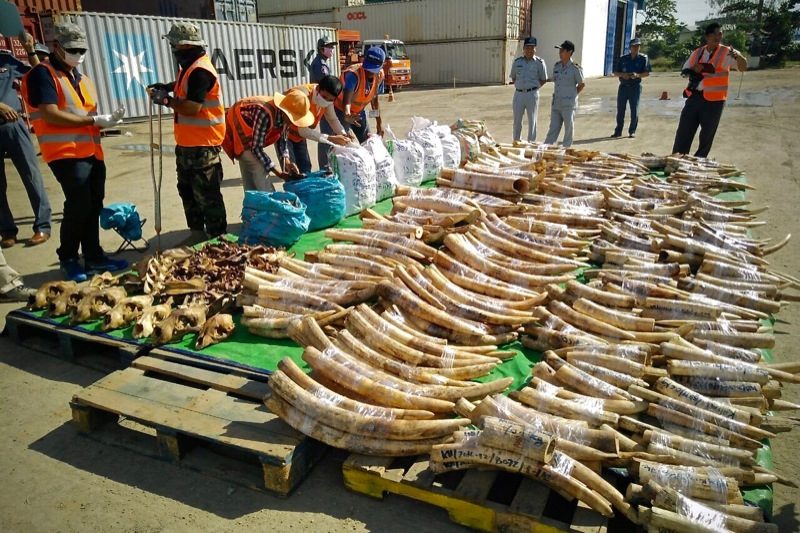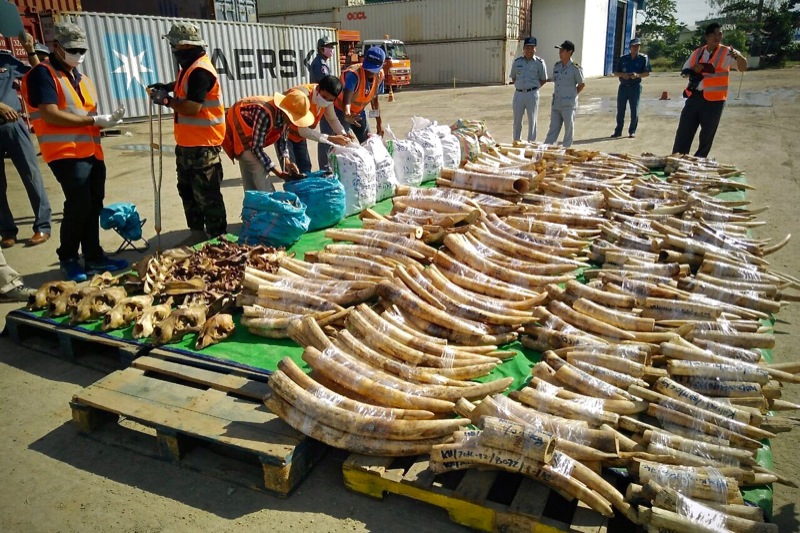Settling a drawn out, yearlong discussion on what Cambodia should do with its millions of dollars worth of seized trafficked animal parts, Prime Minister Hun Sen has announced the haul will be exhibited and not destroyed.
Speaking at the end of the Interior Ministry’s annual meeting on Friday, Mr. Hun Sen said he had ignored a request from “Americans” to destroy the tons of elephant tusks and rhino horns. Taking another swipe at the U.S., he said that it had “no rights on Cambodia’s administration.”

“I agreed to keep them for exhibition, because those items were smuggled from South Africa and were finally seized in Cambodia,” Mr. Hun Sen told a crowd of government officials, adding that the move was suggested by the Environment Ministry.
Of the U.S request, he added: “There is no reason to destroy them because it would look like we are destroying evidence.”
Sent a text message on Sunday, Environment Minister Say Sam Al clarified that the animal parts—about 6 tons, according to Thomas Gray, of the NGO Wildlife Alliance—would be kept for “scientific research” and to exhibit in a “natural museum.”
The news has disappointed conservation workers, who had hoped Cambodia would follow the lead of other countries, including Vietnam and China, which have publicly destroyed stocks of ivory to send a strong message to traffickers.
Ivory can fetch up to $1,100 per kg, according to charity Save the Elephants last year, making Cambodia’s seized stockpiles of mostly ivory worth about $6 million.
“Wildlife Alliance has been encouraging the embassies here to promote the destruction of the ivory,” Mr. Gray said.
“There’s evidence from around the world of mismanagement of ivory stocks: of confiscated ivory disappearing, and then sometimes even being reconfiscated in another raid,” he said.
Museums in Europe no longer display rhino horns, he added, after a series of high-profile thefts.
Mr. Sam Al on Sunday did not clarify how exhibited ivory would be protected.
Cambodia has seen several high-profile ivory seizures in recent years.
In May 2014, more than 3 tons of ivory—the country’s largest-ever haul of elephant tusks—were found hidden in two containers of beans at the Sihanoukville port.
Over four months at the end of last year, 1.6 tons of ivory was discovered.
A Cambodia Daily reporter visited the Forestry Administration in Phnom Penh in November and saw some of the seized tusks kept in a safe.
On Sunday, Mr. Gray said he was uncertain what message would be sent by displaying a room full of tusks and horns.
“If the museum were properly done, and full of blood and things to show that this is the remains of 500 to 1,000 dead African elephants trafficked through this country—that might have educational value,” he said.




